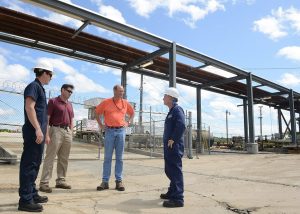Building a home is most welcome but do you know or care how much impact the construction is having on the environment? Perhaps not until you feel the heat, either from the regulatory authorities or unfriendly living conditions. We all know very well that human development has brought an imbalance in the ecology and this has made our lives difficult. The continuous abuse of nature through excessive construction activities has taken its toll. The planet is fast becoming a place where leading a healthy life is becoming tougher.
Added to this is our modern lifestyle that keeps on emitting tons of carbons thereby causing the greenhouse effect. The environment has turned unkind and unbearable at places. Sudden storms and flood accompanied by melting glaciers are threatening our lives. Property and lives are at risk, and it is the time that we know in advance if we are standing atop a volcano that might explode anytime.
The need to assess environmental condition
At last, we have realized that it is better to be safe than sorry. It is in our interest that we now want to know where we stand on the environment. People are willing to assess the health of the environment at the place where they live. They want to know the extent of damage done to the environment because of mindless construction. They also want to know what remedial measures could prevent further harm. This has triggered the demand for environmental site assessments, an elaborate exercise undertaken by professional agencies to prepare a report on the impact of the built-up structure on the environment.
The purpose of assessment
The assessment comprises of different activities carried out as separate projects. The projects have a common goal of determining the impact the building structure has had on the environment, at the location and its surroundings. A phase 3 environmental site assessment takes into consideration the historical usage of the building as well as the current pattern of usage. The assessment consists of gathering information and data from a variety of sources related to the usage of the property. Not the property alone but also the surroundings come under the purview of the assessment that determines the adverse impact on the quality of water and air that includes ground water, surface water, and sediments as well as the soil.
The methodology
The process of site assessment begins by undertaking research for gathering information and then collating the information to summarize it. The study looks into the historical usage of the site and the process of development that lead to the present situation. The information gathered from available records is considered authentic. Review of environmental information about the current condition of the site is another method of gaining insight. Also, physical inspection of the site and interviews with present owners and inhabitants provide valuable information.
If the assessors detect an adverse impact on the environment from either present use or historical usage, they carry out more tests to obtain site -specific information that holds the key to suggesting remedial measures.








